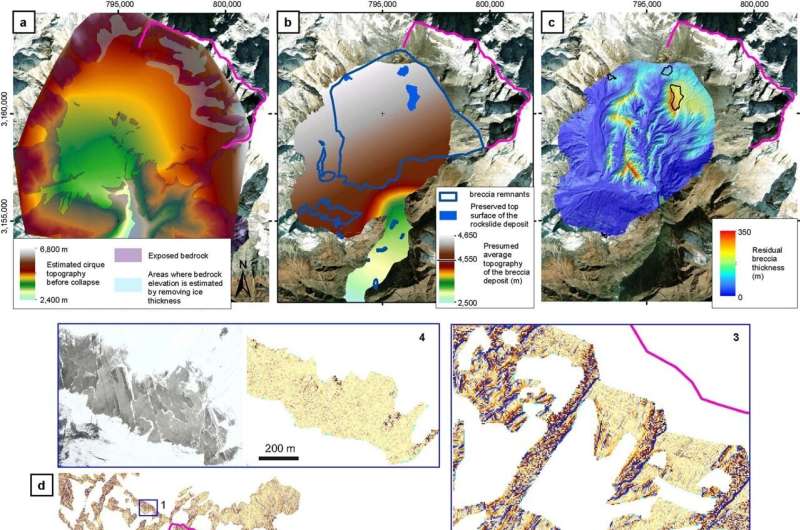July 6, 2023 report
This article has been reviewed according to Science X's editorial process and policies. Editors have highlighted the following attributes while ensuring the content's credibility:
fact-checked
peer-reviewed publication
trusted source
proofread
Evidence found of giant rock slide in Himalayas during medieval times

A team of geologists affiliated with multiple institutions in France, working with a colleague in Nepal, has found evidence of a massive rockslide occurring in a part of the Himalayas in the medieval era. In their study, reported in the journal Nature, the group analyzed features of the Sabche Cirque, a Himalayan basin.
Prior research has shown that some mountains are too tall to fall victim to the types of erosion that wear away shorter mountains—they are so tall that temperatures near the peak are always below freezing, for example, which prevents the cracking that accompanies freeze/frost cycles in lower-altitude mountains. Such mountains are also too tall and steep to host glaciers. Instead, the researchers on this new effort argue, they collapse as rock slides.
In Nepal, there is a mountain range called the Annapurna—it hosts some of the highest peaks in the world. Between the peaks are valleys, plateaus or basins, most of which are similar to others like them. This is not the case, however, with Sabche Cirque—instead of fertile soil, it is mostly covered in rocks. Suspecting that the rocks might be remnants of a centuries-old slide, the team took a closer look.
The team found the rocks to be breccia, smaller rocks embedded in larger rocks. Excavating revealed that the size of the embedded rocks grew larger the deeper they were. They next broke open several of the rocks and carbon-dated plant material they found embedded inside. They all dated back to approximately 1200 CE. Next, they found that one of the peaks next to Sabche Cirque had experienced shearing along one of its faces, suggesting material had fallen from it into the valley below.
The evidence strongly suggests that a massive rock slide occurred sometime around 1200 CE, filling the valley below with debris up to a kilometer deep. The researchers suggest that prior to the rock slide, the peak from which it had occurred was likely over 8,000 meters high, implying it had lost approximately half a kilometer in height.
More information: Jérôme Lavé et al, Medieval demise of a Himalayan giant summit induced by mega-landslide, Nature (2023). DOI: 10.1038/s41586-023-06040-5
Journal information: Nature
© 2023 Science X Network





















